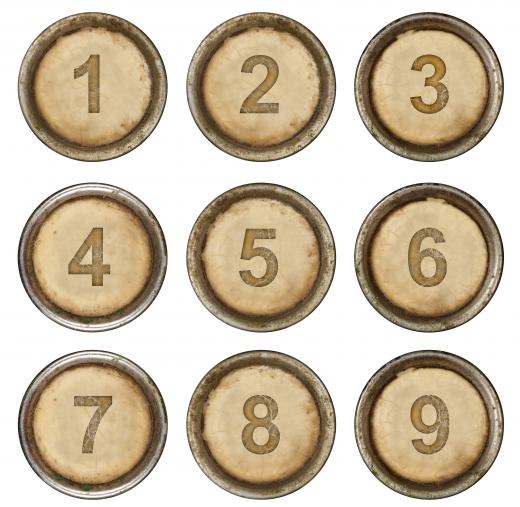What is an Ordinal Number?
An ordinal number is a number that indicates where something is in sequence related to another number or object. In English, an ordinal number is different than other types of numbers in that there are usually a couple of letters added to the root word to produce the ordinal number. However, most ordinal numbers are very similar to their cardinal number counterparts. For example, cardinal numbers are one, two, three and so on. Ordinal numbers are first, second, third and so on.
Ordinal numbers were invented by Georg Cantor in 1897, a German mathematician who was actually born in Russia. He is probably best known for devising the set theory. The set theory basically explains that numbers can work as a set, and there may be numbers common to both sets. For example, if there is a set {1,2,3} and a set {2,3,4}, the common numbers between them would be {2,3}. The common numbers are called the intersection of the sets.
There are a number of other operations that go along with the set theory as well. The set theory also makes it possible to include the number zero as a natural number. The number zero is the only natural number that cannot be an ordinal number.

An ordinal number is commonly used in English when describing the relationship of natural numbers. Natural numbers are counting numbers, or the traditional numbers we think of in mathematics. They are also called counting numbers. An ordinal number can be treated the same as a cardinal number, and thus is subject to any mathematical computations. However, an ordinal number is not commonly used in mathematic computations, except perhaps at the end of the computation.
Ordinal numbers are also very similar to integers, which include both natural numbers and their negative counterparts. However, an ordinal number is never used in the negative form. Therefore, as there are no ordinal numbers representing negative numbers or zero, it is logical to conclude that ordinal numbers represent only positive, whole numbers.
In modern usage, ordinal numbers are mainly used to count places. For example, if a group finished a race, the top three we would say finished first, second and third. The next three would finish fourth, fifth and sixth. In school, this is a common way to refer to grade levels.
AS FEATURED ON:
AS FEATURED ON:











Discuss this Article
Post your comments